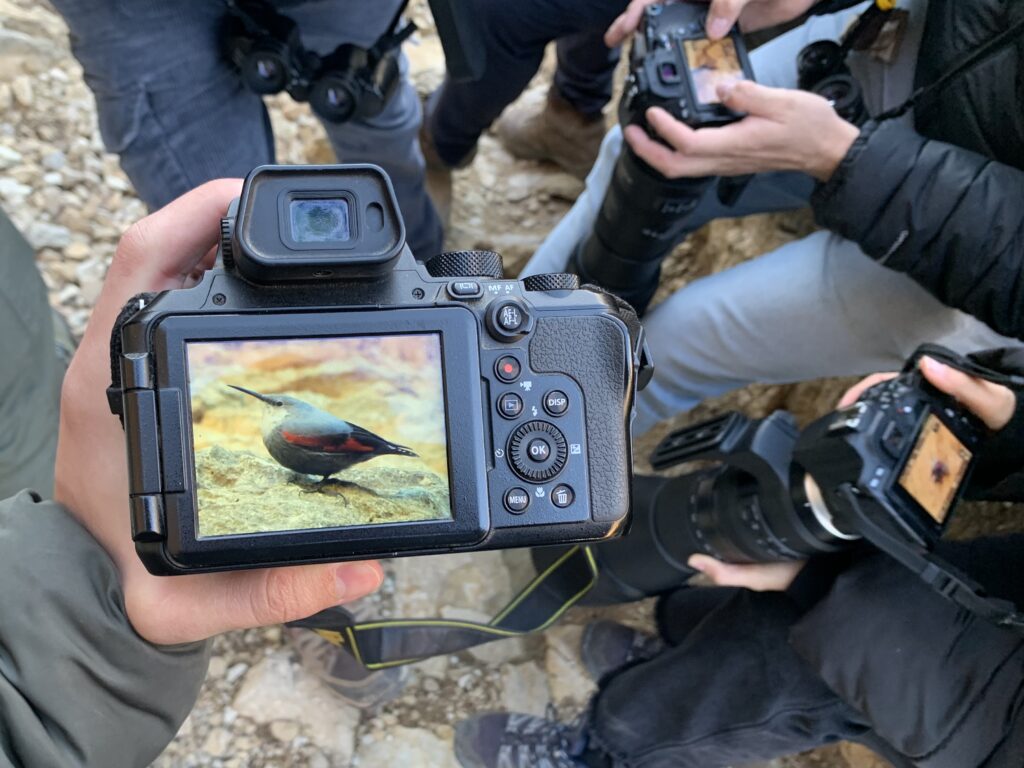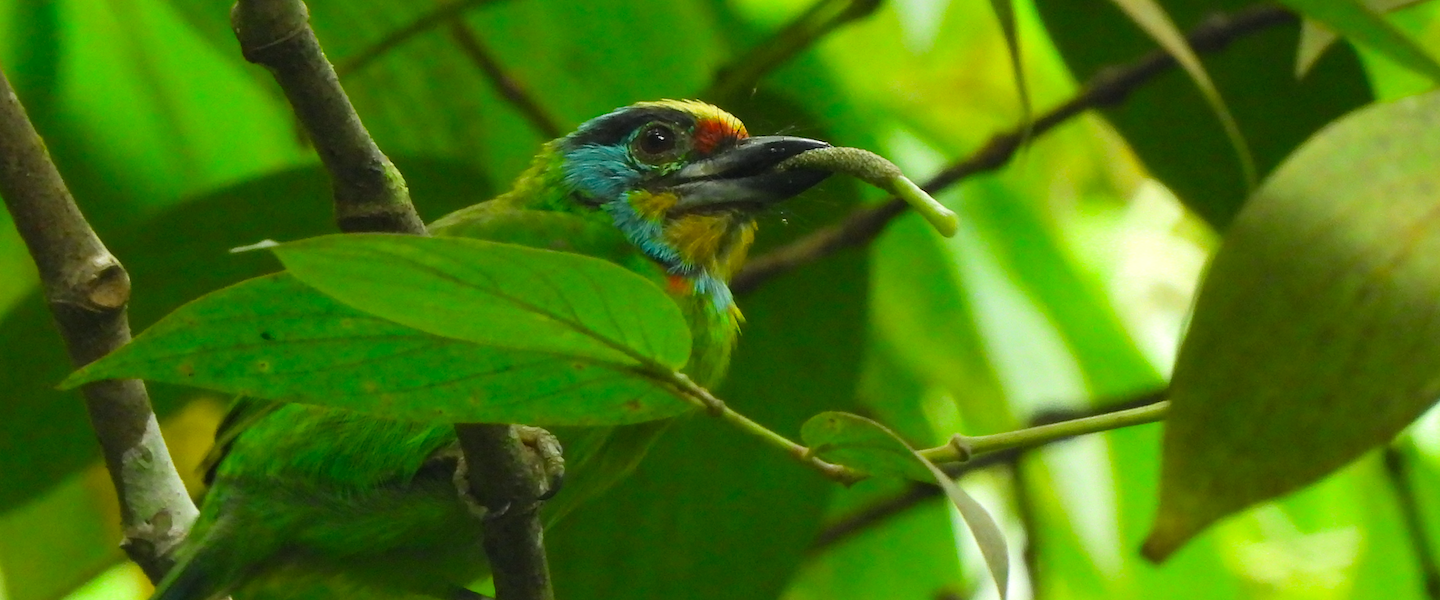The yearly SEO-BirdLife election for the Bird of the Year in Spain was held some weeks ago, and the mighty wallcreeper (Tichodroma muraria) was selected as the focus species for conservation this 2025. As early into the year as we are, today I got the chance to see it after many years, and for the first time in my home region.

After several winters with few wallcreeper sightings in some mountain ranges of Alicante — Aitana, Serrella and Mariola —, Xama de Crevillent found one bird in Racó Bell, a recreational area in the protected landscape of Serra de Maigmó i Serra del Sit, in the middle of Alicante province. Careless of numerous climbers bouldering on the rock walls, the wallcreeper has been sighted almost everyday since 6th January.
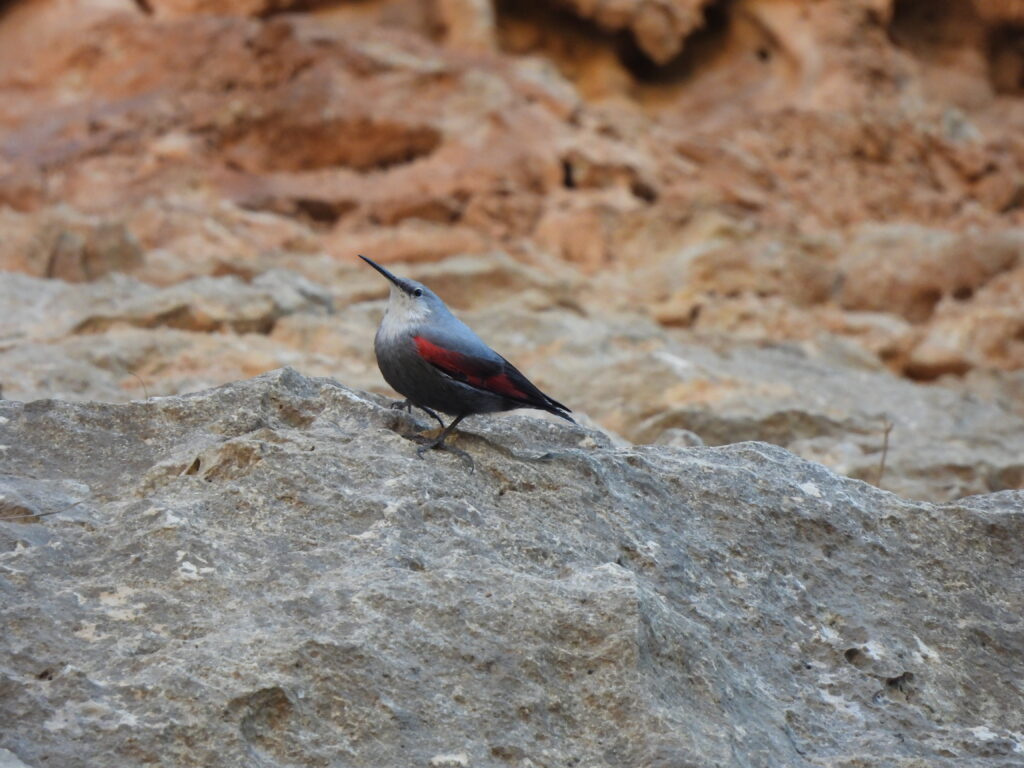
After work, I joined Tati Pessano and Claudio Amorós and left towards Petrer. The Aleppo pine (Pinus halepensis) forest yielded some typical birds, such as crested tit (Lophophanes cristatus), chiffchaff (Phylloscopus collybita) or chaffinch (Fringilla coelebs). European serins (Serinus serinus) sang loudly and some Dartford warbler (Curruca undata) called nearby. The idea was to reach a rock wall where people climb, and look for the wallcreeper both there and on a ridge on the other side of the mountain. As we waited, we were joined by some colleagues: Mario Marcos, José Luis Carretero, David Moya and Andrea.

The ridge on our site got our necks hurting as we waited for the bird for over an hour — only encountering a male black redstart (Phoenicurus ochruros) and watching some climbers doing their thing. Scoping on the other side, several crag-martins (Ptyonoprogne rupestris) flew up and down the crest. A kestrel (Falco tinnunculus) caught a prey and flew downhill, but it dropped it and flew back to the mountain and a couple of red-billed choughs (Pyrrhocorax pyrrhocorax) performed their acrobatic flights and calls as they do. Tati noticed a Barbary sheep (Ammotragus lervia) foraging far away.

As I grabbed the scope to point at the Barbary sheep, I noticed a compact, long-billed bird coming over to the rock wall on our side, flapping its wings like a hoopoe, shaped somehow like a butterfly. The bird touched down at around 17:00, and as it did and started ‘bouldering’, we all saw it. The brilliant wallcreeper sat just some meters above our heads and started flapping its wings, revealing its smart red, black and white pattern as it foraged on the rocks.
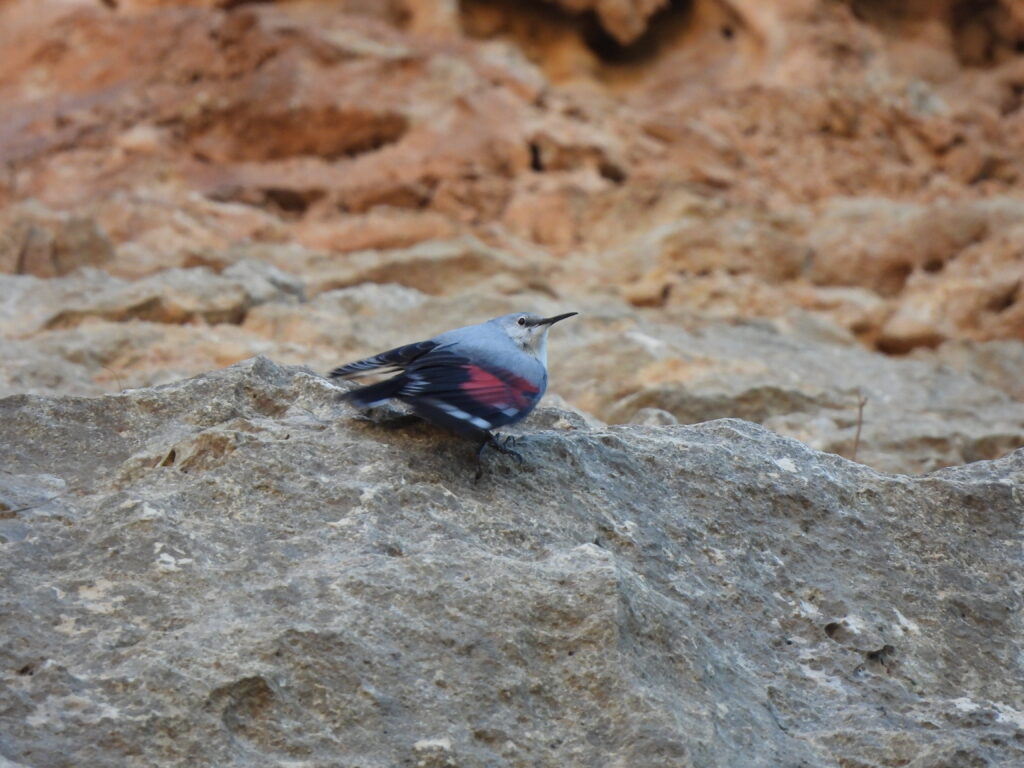
Its restless behavior got us entertained for as long as it flew around. Apparently, the bird has settled down some sort of routine and it has been seen at this time in the evening on other days as well, on such specific part of Racó Bell — on the left side of the climbing rock, coming from the road just 10 min away. It arrives some 20 m over the ground, and moves up the wall before creeping through the top of the ridge.
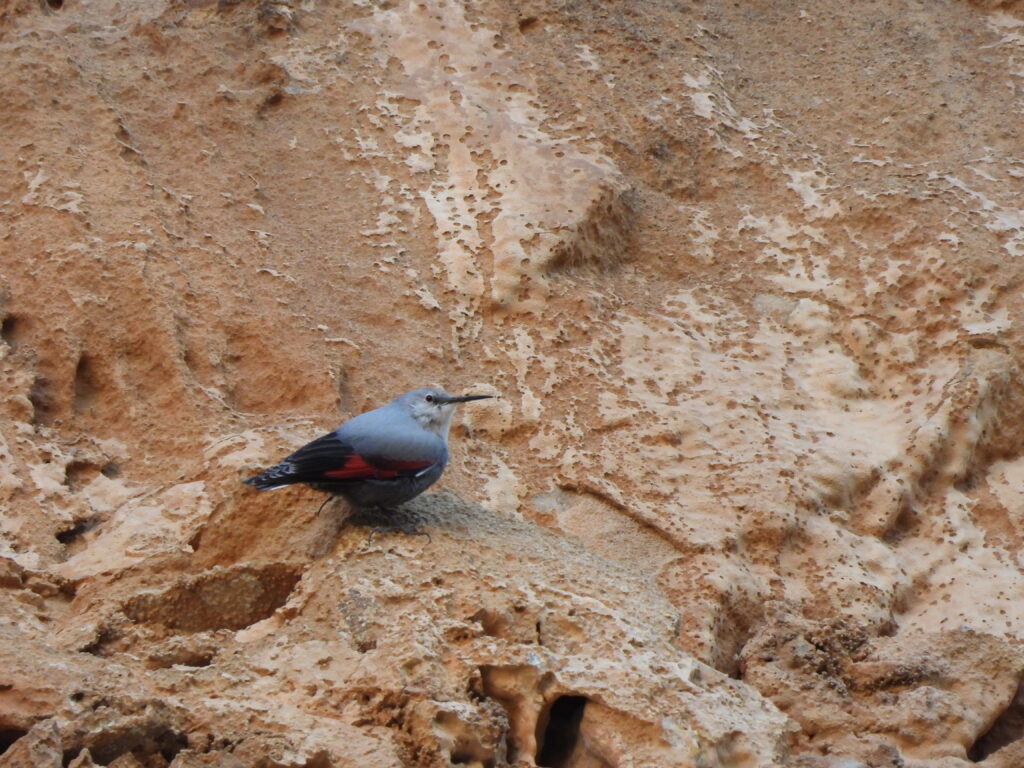
This species is unique as it belongs to its own monotypic family, Tichodromidae. The phylogeny of this climbing rock-dweller has been debated over time, and is currently believed to be basal to the nuthatch, treecreeper and wren families. The bird in Racó Bell displayed a fully white throat, as opposed to the black throat of its breeding plumage.
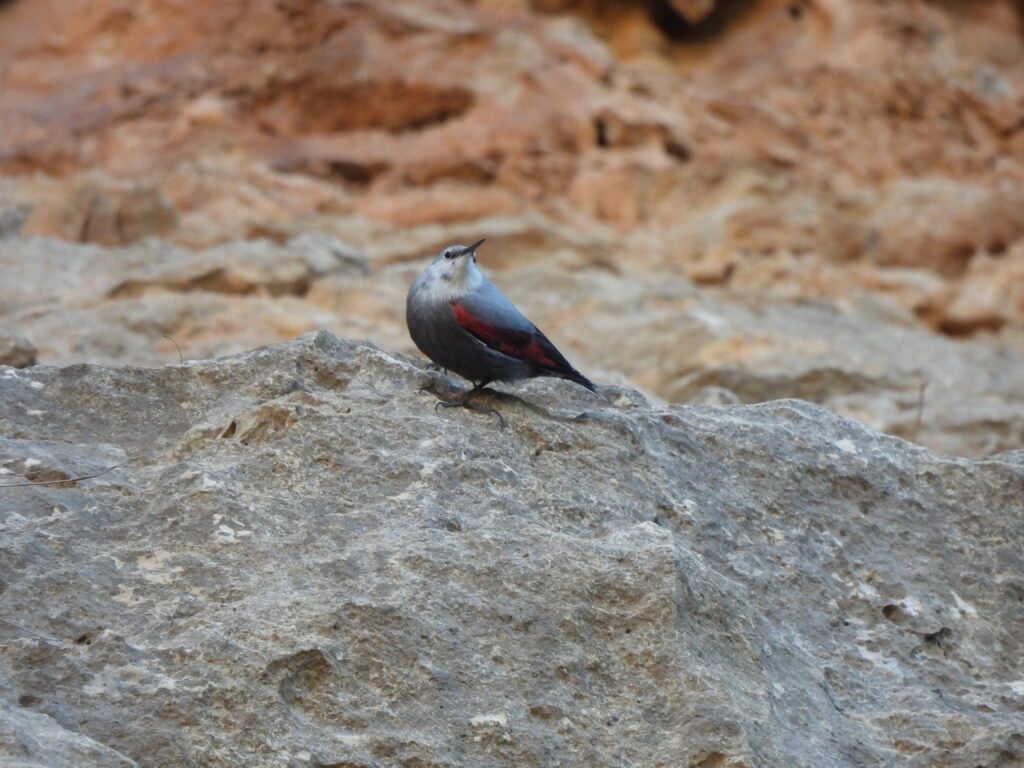
Mostly scarce along its distribution, the wallcreeper breeds throughout high elevations (1.000-5.100 m) ranging east from central China, all the way to the Pyrenees and the Cantabrian Range in the Iberian Peninsula, usually in areas of very low accessibility. The wallcreeper is an altitudinal migrant, as birds move downhill when extremely cold temperatures hit the montane habitats where they breed and food becomes scarce.
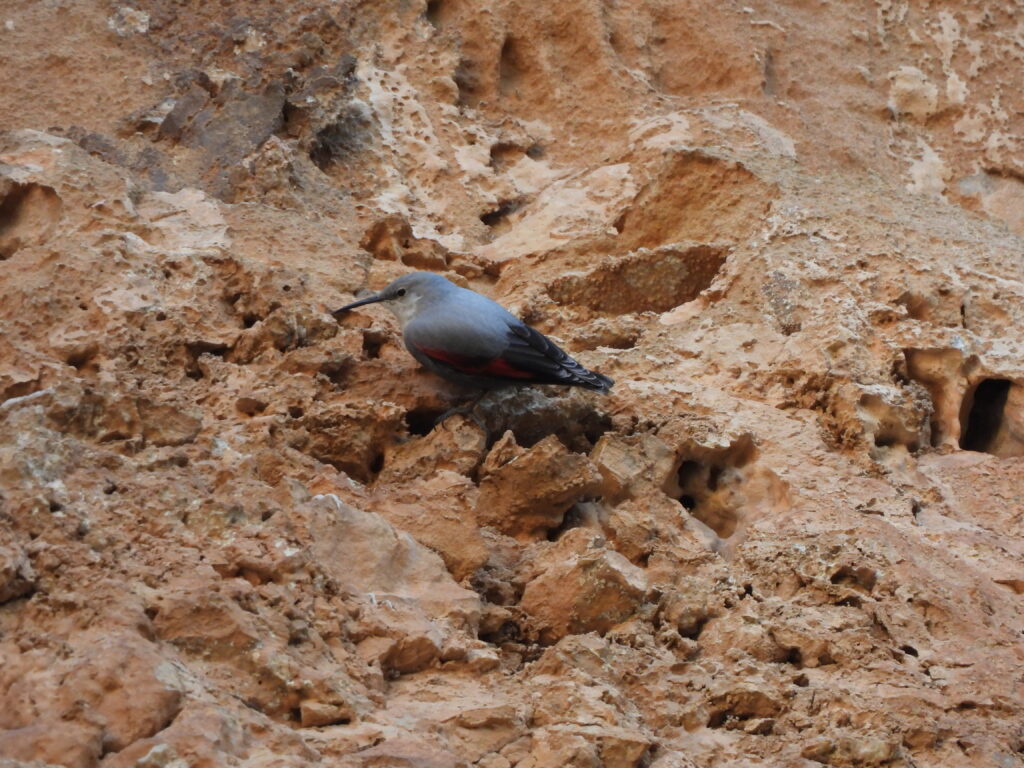
These movements have triggered records of the species in places like Thailand, Vietnam, the Netherlands or England, and often in buildings and other artificial walls. Luckily for us, once every few winters, some of these birds are found in montane areas of Alicante.
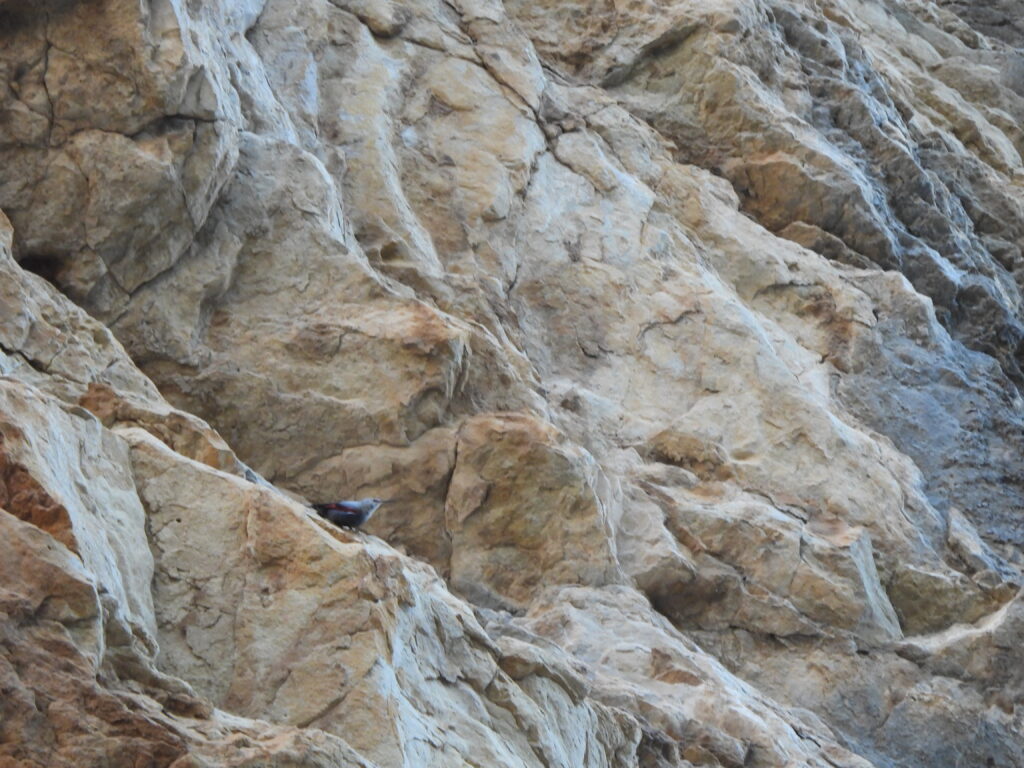
And as much as I’ve looked for wallcreepers along the numerous ridges of my hometown Alcoi, the quality of this sighting at a beautiful place relatively close from home did the job. This bird made me extremely happy.
